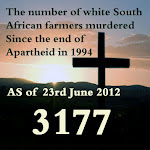Part I: Reality Testing
By Nicholas Stix
May 11, 2001
Toogood Reports
As I write, college instructors around the country are looking at their grade books, and holding the following internal monologue: “Well, her attendance is terrible, she hasn’t done her assignments, and her test average is a ‘D,’ but she’s black, and she could get me fired, so I’ll give her a ‘B.’... He’s white, so I’ll flunk him.... She’s illiterate, but she’s Puerto Rican, so I’ll give her a ‘B.’...
Such internal monologues are typically held by instructors in what I call the Asphalt League of public higher education, especially in the AL’s urban precincts.
Such monologues apparently occur much less often in the minds of instructors at overpriced, private universities (OPUs) like Harvard, Stanford, and Princeton. At such schools, money talks, and parents who are paying over $30,000 per year per child for an “education,” will not tolerate instructors giving their children less than top grades. The good folks teaching at OPUs have resolved their conflicts, by giving high grades to almost everyone — half of all grades at Harvard are “A” or “A-”; some eighty percent of all grades at Stanford are “B” or higher; and at Princeton the figure is over 83 percent.
To get an idea of the significance of such grading, consider that according to a classic bell curve, the traditional criterion used for grading the members of a class, only 15 percent of grades would attain the lofty heights of A- or A, and that for the past thirty years, as scores on standardized tests have gone down, average college grades have shot up.
In February, Harvey Mansfield noted that grade inflation is rampant at Harvard. Mansfield, a distinguished political philosopher who has spent his entire, 39-year career at Harvard, observed that the inflation had begun during the 1970s. He announced that he gives every student two grades: The grade the student actually earned, and the grade Mansfield is officially recording for him, so as not to harm the student in an age of grade inflation.
As controversial as Mansfield’s announcement was, that wasn’t what got him into trouble. It was his explanation: He believes that grade inflation was initially a result of affirmative action, and was limited to black students. Later, he says, instructors compensated for the unfair advantage they were granting affirmative action admits, by inflating the grades of white (and, presumably, Asian) students, too.
Mansfield has admitted that he has no scholarship to back up his contention, just his long experience at Harvard.
Outraged black students complained publicly, and even trespassed in Mansfield’s class, sitting in silence before leaving. Harvard is obviously a world apart from the University of California-Berkeley, where an instructor who made the same statement would have to be identified via dental records. Harvey Mansfield was immediately celebrated by conservative academics and journalists. In National Review Online, for example, Stanley Kurtz devoted his February 20 column to praising Mansfield.
Now, I have no personal beef with Harvey Mansfield. But as he himself has admitted, he has no scholarship to support his claims. So, why would conservative academics — who routinely pillory racial socialists for making statements lacking any scholarly basis — celebrate a man who is guilty of the same offense? And why did Mansfield’s black student antagonists fail to make an issue of his lack of scholarship?
The reason is that things are much worse in academia than even its brand-name critics are aware of. In a debate, opposing scholars come up with conflicting data, and argue about why their respective data fail to match, or give mutually irreconcilable interpretations to generally accepted data. But no one is even providing data for a grade inflation debate.
Mainstream conservatives like Stanley Kurtz praise Harvey Mansfield, because he’s one of them; racial socialists attack him, because he’s one of “the enemy.”
Racial socialists know, in their hearts, that they seek to politically cleanse the university of all who disagree with them. Many mainstream conservatives, on the other hand, delude themselves that they stand for “disinterested scholarship.”
Although Mansfield spoke in February, I scooped him on this story ... by three years. I have a special, albeit invisible role in this non-debate. You see, there IS a body of scholarship on grade inflation: My scholarship. In 1998, I published the longest article on the topic I’m aware of, in the nation’s most respected, conservative academic journal, Academic Questions; a series in the New York Post; another series in the New York Daily News; related articles in Insight, The Weekly Standard, and Chronicles magazines, respectively; and responding to a request from the American Council of Trustees and Alumni, I produced a 11,000-word report on reforming the City University of New York system.
And I can assure you that Harvey Mansfield and Stanley Kurtz read my Academic Questions article. Both men are closely associated with the National Association of Scholars, which publishes AQ.
I was on a one-man crusade. I would reform the City University system, where I was then teaching, and my glorious campaign would result in a book deal for the manuscript I was working on.
I believe the social work term for my problem is “reality testing.”
Things didn’t exactly work out as I envisioned them: CUNY’s administrators have since pioneered new advances in the science of academic fraud; my book remains unpublished; and my crates full of thousands of pieces of evidence of academic corruption gather dust, while “scholars” pay rapt attention to a man who admits that he has no evidence to support his claims.
Maybe I’m not the only one who has a problem with reality testing.
Part II: Crime Scenes
Part III: Plagiarism
Part IV: Fighting City Hall
Part V: Smoking Guns
Part VI: The Garden State
Part VII: To be of Use
Part VIII: Deafening Silence
Subscribe to:
Post Comments (Atom)

No comments:
Post a Comment